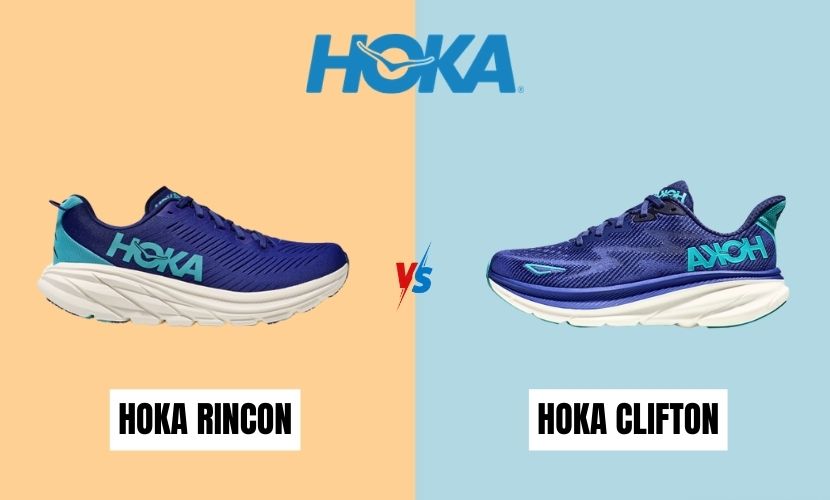When it comes to running shoes, two of the most popular padding technologies are Boost and Bounce. Both technologies have been structured to offer runners a snug and reactive ride, but their formation and performance vary.
Boost is a padding technology offering thousands of minor foam pellets fused to generate a single, hard-wearing midsole. This technology is engineered to provide runners with an outstanding energy backup, which can aid in upgrading their speed and efficiency. On the other hand, Bounce is a padding technology that offers a single piece of foam constructed to offer a more reactive and supportive ride.
Simultaneously, both of these technologies are built to provide athletes with a cozy and responsive ride, and they have various advantages and disadvantages that make them better suited for distinct kinds of players and activities.
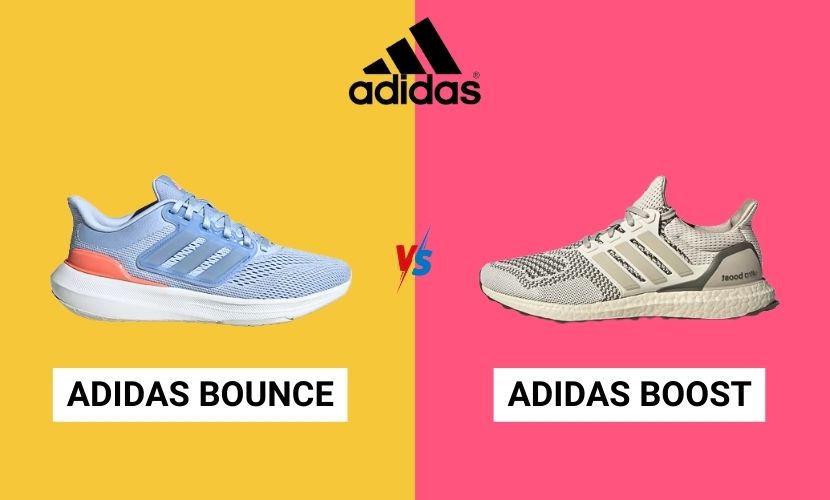
Feature Table: Adidas Bounce Vs Adidas Boost
| Feature | Adidas Bounce | Adidas Boost |
| Technology | Delicate foam for padding | TPU pellets for reactive cushioning |
| Energy Return | Good impact absorption | Exceptional energy return |
| Durability | Durable foam material | Resilient and long-lasting |
| Comfort | Reactive and stable | Plush and comfortable |
| Best For | High-impact activities | All-around running and activities |
| Fit | Snug fit with natural movement | Comfortable, wide toe box |
| Weight | Moderate weight | Lighter weight |
| Versatility | Versatile for various activities | Great for both running and daily wear |
| Heel Drop | Moderate heel drop | Varies based on model |
| Price Range | Affordable | Higher cost for premium technology |
| Suitable For | Intense runners, basketball players | Runners, athletes, daily wear |
| Overall Assessment | Responsive and stable, impact absorbent | Exceptional energy return, comfort |
Adidas Bounce Overview
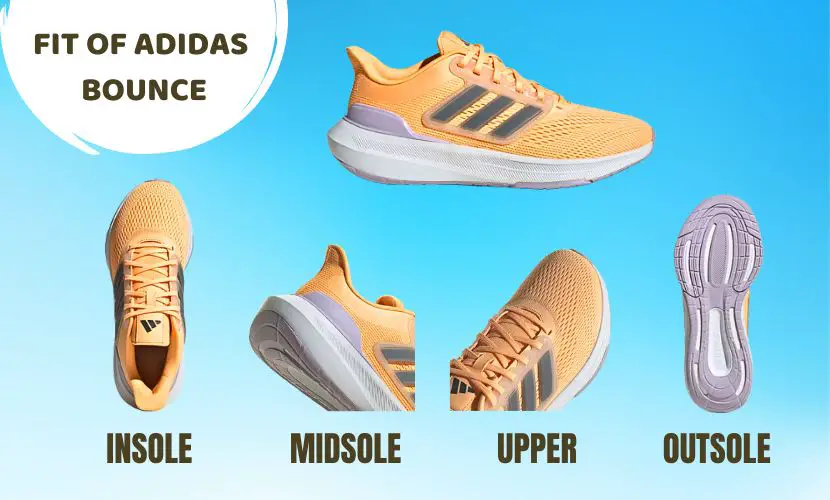
Adidas Bounce is a midsole technique designed by Adidas that is structured to provide finer padding and energy backup. The Bounce technology is engineered with a delicate foam material in Adidas shoes’ midsole. The foam is constructed to compress and spring back to its original appearance, offering a reactive and snug ride.
One of the significant advantages of the Adidas Bounce technology is its capability to soak up the impact and minimize shock on the feet and joints. This makes it an outstanding choice for players who must shield their feet during top-impact activities like running and jumping.
The Adidas Bounce technique is also famous for its durability. The foam material utilized in the midsole is structured to resist the deterioration of regular use, verifying that the shoes will endure for a long time.
Adidas Bounce is a dependable, iconic midsole technology with remarkable padding, energy backup, and longevity. It is a fantastic option for athletes requiring a shoe that can resist top-impact activities while giving ease and support.
Adidas Boost Overview
Adidas Boost technology is a midsole cushion retailed as the flagship shoe foam for Adidas. The Boost foam is structured to offer a reactive and snug ride, making it perfect for runners and players who require padding and aid during their workouts.
The Boost foam comprises thousands of tiny pellets combined to generate a hard-wearing and reactive foam. This technology gives an excellent energy backup, showing that the foam squeezes and bounces back rapidly, offering a spring-like impact that moves the runner forward.
One of the significant advantages of Adidas Boost technology is that it offers an excellent standard of padding without adding additional weight to the shoe. This makes it ideal for athletes who want to reduce the weight of their boots while still attaining the support and padding they need.
Adidas has continued to upgrade and progress the Boost technology since its first commercial launch in 2013. Some of the critical achievements of Boost incorporate the institution of the Ultraboost shoe in 2015 and the advancement of the Boost HD foam, which gives a more sturdy and reactive ride.
Overall, Adidas Boost technology is a dependable, high-standard midsole foam offering a snug and reactive ride for runners and players.
Key Features of Adidas Bounce
Adidas Bounce technology is structured to offer maximum ease and steadiness to athletes during their training sessions. The given below sub-parts will highlight the significant attributes of Adidas Bounce:
Comfort and Fit
Adidas Bounce shoes are constructed to offer a snug fit to athletes. The boots provide padded pods inside the collar and stretchable cushioning in the midsole, which aids in giving maximum ease to the feet.
The shoes are also structured to imitate the movement of the feet, which aids in lessening discomfort and tiredness during extended training sessions.
Durability
Adidas Bounce shoes are designed from top-quality materials, which makes them hard-wearing and durable. The boots are constructed to resist the deterioration of acute training sessions, and the outsole gives remarkable traction and grip on different surfaces.
Performance
Adidas Bounce shoes are structured to intensify the performance of athletes. The boots offer a reactive midsole that gives energy backup, which aids in upgrading players’ versions during their training sessions. The shoes are also feathery, which aids in minimizing tiredness and polishing up endurance.
In conclusion, Adidas Bounce shoes are a fantastic option for athletes who desire to upgrade their performance throughout their training sessions. The shoes offer maximum ease, longevity, and performance, making them a must-have for any intense athlete.
Key Features of Adidas Boost
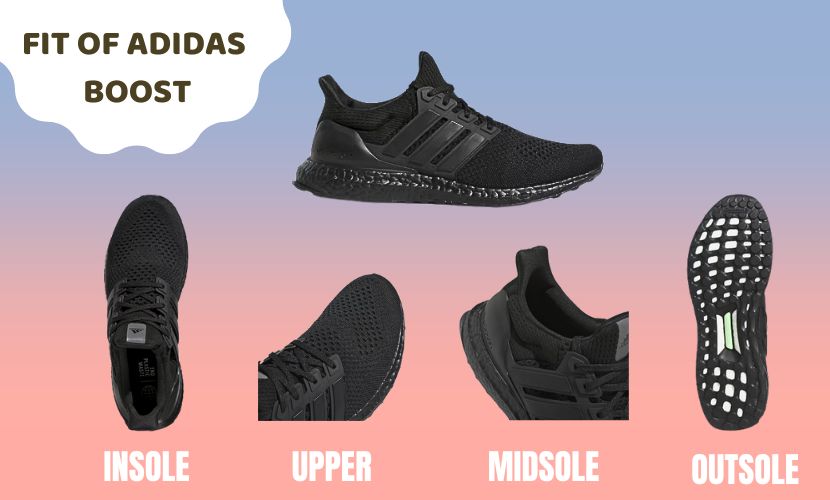
Adidas Boost is a midsole foam technique that has been advertised as the flagship cushion technology of Adidas. It was first initiated in 2013 and has become a famous option among athletes and sneaker fanatics. The following are several significant attributes of Adidas Boost:
Energy Return
One of the most noteworthy attributes of Adidas Boost is its energy backup. The foam is designed up of thousands of tiny foam pellets that squeeze and extend with every step, generating a spring-like effect that aids in propelling the user forward. This energy backup is more significant than customary EVA foam, which is commonly utilized in running shoes.
Cushioning
Adidas Boost also offers excellent padding. The foam pellets are capable of squeezing and molding to the appearance of the user’s foot, offering a personalized fit that supports soaking up impact and lessening pressure on the joints.
Adidas Boost is a famous option among runners and other players who require a shoe that offers both ease and performance.
Longevity
Another advantage of Adidas Boost is its durability. The foam pellets can adjust their appearance and structure over time, even with recurring use. This shows that shoes structured with Adidas Boost can offer consistent performance and ease for extended periods compared to shoes constructed with customary EVA foam.
Adidas Boost is a midsole foam technology offering excellent energy backup, cushioning, and durability. It is a famous option among players and sneaker fanatics who value performance and ease.
Material Comparison Of Shoes Using Bounce & Boost Technology
Regarding selecting between Adidas Bounce and Boost technology, it is necessary to consider the elements utilized in the shoe. Both techniques use distinct materials in the insole, midsole, outsole, and upper. Following is a breakdown of the materials used in every part:
Insole
Adidas Bounce shoes’ insole is structured with a foam material that gives padding and support. The foam is constructed to mold the foot’s appearance, offering a custom fit.
The insole of Adidas Boost shoes is designed of Boost foam, engineered to be more reactive and springy than customary foam materials.
Midsole
The midsole is where the most significant part of the padding and support in a shoe derives from. Adidas Bounce shoes utilize a Bounce foam midsole, structured to offer cushioning and aid while also being delicate.
Adidas Boost shoes use a Boost foam midsole, which is constructed to be more reactive and springy than customary foam materials.
Outsole
The outsole of a shoe is the section that comes into contact with the surface. Adidas Bounce shoes use a rubber outsole that provides remarkable grip and longevity. Adidas Boost shoes use a Continental rubber outsole that is constructed to offer even finer grip and durability.
Upper
The upper of a shoe is the section that wraps the foot. Adidas Bounce shoes use a netting upper constructed to be permeable and feathery. Adidas Boost shoes utilise a Primeknit upper engineered to be even more porous and delicate than the tracery upper utilised in Bounce shoes.
Overall, both Adidas Bounce and Boost shoes use top-standard, structured materials to provide padding, support, and durability.
Comparative Analysis
Comfort Comparison
The Adidas Bounce and Boost technologies are engineered to provide various levels of comfort to the wearer. Bounce foam is structured to provide more padding and reactiveness, making it perfect for top-impact activities like running and jumping. Conversely, Boost foam is engineered to give a more snug and opulent feel, making it ideal for regular wear.
In the matter of fit, both technologies provide a snug and comfy fit. However, some wearers have mentioned that Boost shoes run moderately smaller than Bounce shoes. Furthermore, Boost shoes tend to be more absorbent than Bounce shoes, which can be necessary for those who sweat a lot throughout physical activities.
Performance Comparison
Concerning performance, both technologies offer versatile advantages. Bounce foam gives a more reactive and springy feel, which can aid in upgrading the version in top-impact activities. Boost foam, on the other side, provides a more padded and snug feel, which can help minimize tiredness and elevate overall performance.
Regarding weight, Boost foam is more delicate than Bounce foam, which can be an obligatory factor for athletes who prefer speed and legerity. Furthermore, Boost foam provides finer energy backup than Bounce foam, which can aid in refining performance in activities requiring volatile movements.
Durability Comparison
Both Bounce and Boost technologies are structured to be hard-wearing and durable. However, Boost foam has been popular to squeeze and lose its appearance over time, particularly with heavy use. Bounce foam, on the other side, tends to adjust its shape and reactiveness even after extended use.
Regarding outsole durability, both technologies provide remarkable traction and grip on various surfaces. However, some wearers have mentioned that Boost shoes incline to deteriorate faster as compared to Bounce shoes, particularly in great-impact activities.
Price Comparison
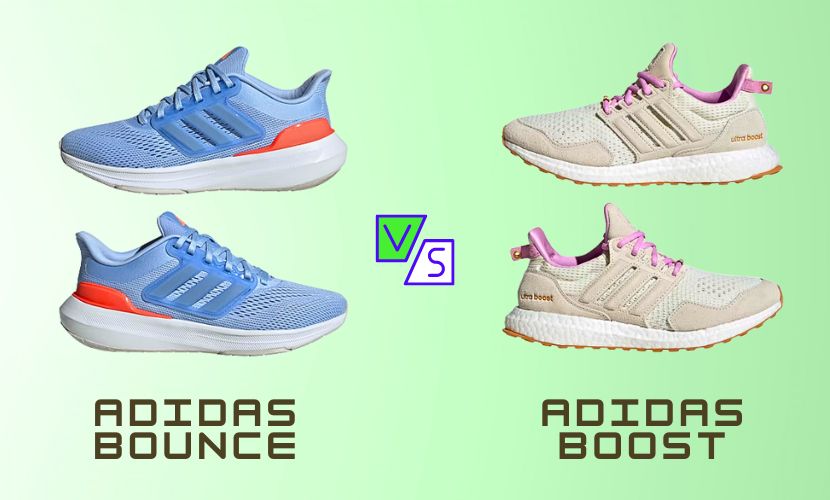
Concerning selecting between Adidas Boost and Bounce, price is an efficient factor to contemplate. While both technologies provide premium padding and support, they are available at various prices.
In general, Adidas Boost shoes are more costly than Bounce shoes. This is due to Boost technology being regarded as the flagship midsole shoe foam of Adidas and is frequently utilized in their exclusive running shoes. Conversely, Bounce technology is used to a broader extent in Adidas shoes, incorporating training and basketball shoes.
Following is a breakdown of the cost comparison between Adidas Boost and Bounce shoes:
Adidas Boost
- The Adidas Ultraboost, one of the most renowned Boost shoes, retails for approximately $180-$200.
- Other Boost shoes, such as the Adidas Solarboost and Adidas Adizero Boston, can range from $100 to $180.
Adidas Bounce
- The Adidas Alphabounce, one of the most famous Bounce shoes, retails for approximately $100-$120.
- Other Bounce shoes, such as the Adidas Crazy Explosive and Adidas Dame 5, can range from $80 to $130.
It is necessary to mention that prices differ based on the particular model and size. Furthermore, sales and promotions may influence the costs of both Boost and Bounce shoes.
While Adidas Boost shoes may be available at a more significant price point, they provide premium padding and support for acute runners. Adidas Bounce shoes, on the other side, give a more economical choice for those searching for quality padding and support in their daily shoes.
Weight Comparison
Regarding selecting between Adidas Bounce and Boost, one factor that several individuals detect is weight. In general, delicate shoes can offer a more snug and agile feel; on the contrary, massive shoes may give more aid and steadiness.
Considering the weight of Adidas Bounce and Boost shoes, it is evident that there is a dissimilarity between the two. Boost shoes are moderately massive compared to Bounce shoes because of the extra padding technology. For instance, the Adidas Ultraboost 22 weighs approximately 10.9 ounces; on the other side, the Adidas Alphabounce Beyond 2.0 weighs about 9.5 ounces.
However, the weight dissimilarity between Boost and Bounce shoes is not always efficient. Some Boost shoes may be more delicate than some Bounce shoes. For instance, the Adidas Solar Boost 19 weighs 10.7 ounces, which is light compared to the Ultraboost 22.
Eventually, a shoe’s weight should be considered when selecting between Boost and Bounce. Other factors, such as padding, support, and fit, should also be considered.
Stack Height & Heel Drop
When contrasting Adidas Bounce and Boost technologies, one obligatory factor to detect is the shoes’ stack height and heel drop.
The stack height shows the massiveness of the midsole, which can impact the padding and reactiveness of the shoe. Adidas Boost shoes typically have a greater stack height than Bounce shoes, providing more padding and impact absorption. However, this also shows that Boost shoes can feel a bit massive and less reactive than Bounce shoes.
The heel drop, on the other side, refers to the dissimilarity in height between the heel and forefoot of the shoe. A more significant heel drop can uplift a heel strike; conversely, a more profound heel drop can encourage a midfoot or forefoot strike. Adidas Boost shoes tend to have a more significant heel drop than Bounce shoes, making them more adaptable for athletes who prioritize a heel strike.
Following is a comparison of the stack height and heel drop of several famous Adidas running shoes:
| Shoe Model | Stack Height (Heel/Forefoot) | Heel Drop |
| Adidas Ultra Boost | 32mm/22mm | 10mm |
| Adidas Solar Boost | 32mm/22mm | 10mm |
| Adidas Adizero Boston | 29mm/19mm | 10mm |
| Adidas Adizero Adios | 27mm/17mm | 10mm |
| Adidas Alphabounce | 24mm/16mm | 8mm |
Several athletes may prioritize a greater stack height for more padding; on the other hand, others may agree on a more profound heel drop for a more natural feel. Eventually, the perfect way to detect the ideal shoe for you is to test on various models and determine which feels most snug and supportive.
How does Adidas Bounce & Adidas Boost Fit?
Adidas Bounce and Boost are two of the most famous padding technologies in Adidas shoes. These technologies offer remarkable ease and support but have distinct advantages that make them adaptable to various activities.
Adidas Bounce is a feathery and reactive padding technology that offers energy backup and support during great-impact activities. The Bounce technology comprises an exclusive foam material manufactured to give more excellent padding and impact absorption. The foam material is also engineered to be hard-wearing and durable, making it an outstanding option for athletes who require shoes that can resist the diligence of their sport.
On the other side, Adidas Boost is a padding technology structured to offer maximum comfort and aid during low-shock activities. The Boost technology comprises thousands of tiny foam pellets squeezed together to generate an exceptionally reactive and energy-returning padding system. The Boost foam is also engineered to be highly delicate and stretchable, making it a remarkable option for runners and other players who require shoes that can offer maximum ease and support during elongated-distance activities.
Concerning fit, Adidas Bounce and Adidas Boost both provide outstanding support and ease, but they have distinct characteristics that make them adaptable for various kinds of feet. Adidas Bounce is structured to offer a comfortable and supportive fit, with a moderately broader toe box that permits natural foot movement. Conversely, Adidas Boost is structured to provide a more relaxed and snug fit, with an extensive toe box that allows more innate foot movement.
Overall, Adidas Bounce and Adidas Boost are ideal padding technologies that provide different advantages for different activities. Whether you are an athlete, a basketball player, or someone who requires snug and supportive shoes for regular wear, Adidas has padding technology that is absolutely for you.
Which one is good for running, Adidas Bounce vs. Adidas Boost?
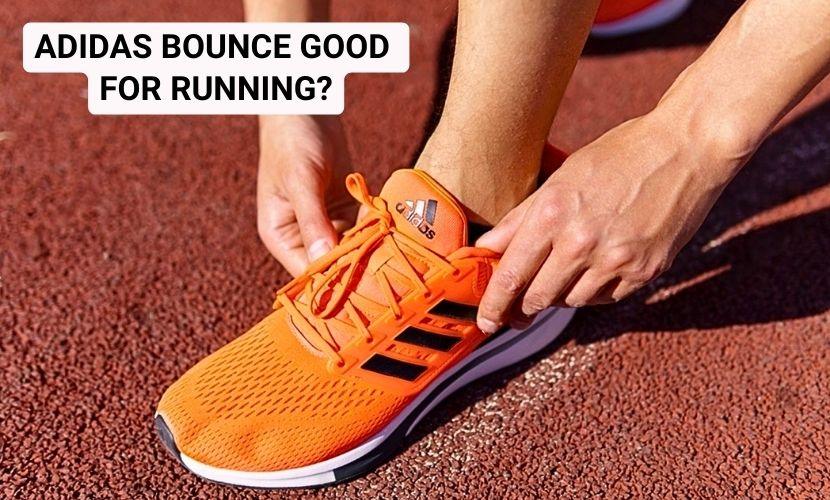
Adidas Bounce and Boost are two famous midsole technologies in Adidas running shoes. Both technologies contain their versatile attributes and advantages. In this part, we will contrast Adidas Bounce and Adidas Boost to detect which is finer for running.
Adidas Bounce
Adidas Bounce is a midsole technique that utilizes a special foam to offer padding and support. The foam is constructed to squeeze and spring back, offering a reactive feel that aids runners in pushing off the surface with more force. The technology is utilized in various Adidas running shoes, incorporating the Adidas Alphabounce and the Adidas Aerobounce.
One of the significant advantages of Adidas Bounce is its durability. The foam is structured to resist repeated shocks, making it an excellent option for runners who invest a lot of miles in their shoes. Furthermore, Adidas Bounce is famous for its versatility. It can be used in various shoes, from delicate racing flats to more padded trainers.
Adidas Boost
Adidas Boost is a midsole technique that uses a unique foam constructed from thermoplastic polyurethane (TPU) pellets. The pellets are combined to generate an exceptionally reactive foam that offers excellent energy backup. The technology is utilized in various Adidas running shoes, comprising the Adidas Ultra Boost and the Adidas Solar Boost.
One of the significant characteristics of Adidas Boost is its energy backup. The foam is constructed to squeeze and rapidly return to its genuine shape, offering a more substantial energy backup with every step. This makes it an excellent option for runners wanting to enhance their speed and productivity. Furthermore, Adidas Boost is famous for its comfort. The foam is mushy and opulent, offering a snug ride that helps to minimize tiredness.
Which one is better for running?
Adidas Bounce and Boost are excellent choices for runners, but which is finer depends on the runner’s particular requirements.
If longevity and versatility are obligatory, then Adidas Bounce may be the superior option. If energy backup and ease are the key priorities, then Adidas Boost may be an excellent option. Eventually, the perfect way to detect which technology is ideal for you is to test both and determine which one feels good during your runs.
Can You Use Adidas Bounce or Adidas Boost for Walking?
Adidas Bounce and Boost are two famous midsole technologies that offer padding and support for players. But can you use them for walking?
The short answer is simply yes. Adidas Bounce and Adidas Boost are adaptable for walking, providing good padding and support. However, several dissimilarities between the two may make one more adaptable to your requirements than the other.
Adidas Bounce is a foam-based technique that gives a reactive and springy feel. It is constructed to soak up the impact and offer energy backup, making it perfect for jumping or running activities. However, it may not be as snug for long walks as it can be rigid.
Conversely, Adidas Boost is a patented foam technology with additional padding and comfort. It is designed with thousands of significant energy capsules that squeeze and extend with every step, offering a mushy and snug ride. Boost is often utilized in Adidas running shoes but can also be worn for walking shoes.
If you are searching for a shoe that offers a lot of padding and comfort for elongated walks, Adidas Boost may be the finer option. However, Adidas Bounce may be more adaptable if you prioritize a more reactive and springy feel.
Conclusion
In conclusion, Adidas Bounce and Boost technologies provide versatile advantages to athletes and sneaker fanatics. While Boost technology is famous for its extra comfort and energy backup, Bounce technology offers a more reactive and stable feel.
Regarding running shoes, the Adidas Supernova is an outstanding option for those searching for an amalgamation of Boost and Bounce foam. The Boost foam in the heel offers better padding; on the other side, the Bounce foam in the forefoot provides a more reactive ride.
For basketball shoes, the Adidas D Lillard 2 is a perfect instance of how Bounce foam can offer the necessary reactiveness and court feel for swift cuts and stops. Conversely, the Adidas Ultra Boost is a famous option for athletes who prefer comfort and energy backup.
Read more on:

